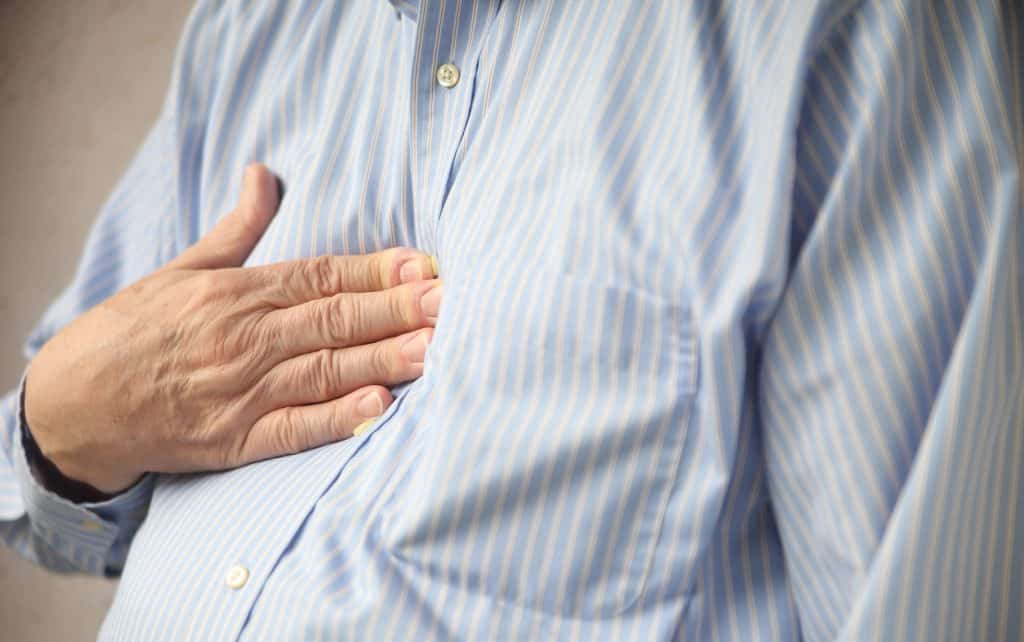

 Want to earn continuing education credit for this article? Learn more.
Want to earn continuing education credit for this article? Learn more.
Heartburn is a burning discomfort in the chest or throat resulting from stomach acid contacting and irritating the lining of the esophagus. It is an expression of acid reflux or gastroesophageal reflux disease (GERD), a phenomenon caused when contents from the stomach rise into the esophagus, much like water bubbling up into a sink from a plugged drain. While occasional episodes are likely not indicative of GERD, frequent heartburn should always be evaluated by a doctor. The exact symptoms and sensations of heartburn vary from person to person, though the most prominent characteristics of heartburn are:
- a bitter, sour or acidic taste in the mouth
- feeling partially digested food or liquid rising from the stomach to the mouth
- burning chest pain, often behind the breastbone
- bloating, belching, and nausea
- chronic cough
- stinging, hoarseness or sore throat
- an increase in severity of pain when lying down or bending over
Physiology
To break down food, the stomach secretes hydrochloric acid. While the stomach’s lining protects it from this potent acid, the esophagus does not share the same protection. Thus, heartburn is the burning sensation of hydrochloric acid entering the esophagus.
The lower esophageal sphincter (LES) is the muscular valve connecting the esophagus and stomach. The LES is a high-pressure zone that acts as a barrier to protect the esophagus against the backflow of gastric acid from the stomach. If the LES relaxes or malfunctions, stomach acid flows upward into the esophagus. Normally, the LES works like a dam, opening to allow food to pass into the stomach and closing to keep food and acidic stomach juices from flowing back up into the esophagus. Acid reflux occurs when the LES is weak or relaxes inappropriately, allowing the stomach’s contents to reverse direction. While medical experts are uncertain why this happens, a loss of muscle tone in the LES results in the inability to close completely after food empties into the stomach. A complex smooth muscle segment under the control of nerves and various hormones, dietary substances, drugs, and nervous system factors can impair LES function.
Tips to Minimize Heartburn
Since many factors can affect stomach pressure and LES tone, there are many ways to minimize heartburn.
- Elevate – Lying down worsens the burning discomfort associated with indigestion and heartburn. Elevating one’s head when reclining promotes the downward flow of digestion to prevent regurgitation. During a massage session, massage therapists can place extra pillows under a client’s head for a similar effect.
- Dietary avoidances – Suggest clients abstain from food or drink that increases acid secretion, decreases LES pressure or slows stomach emptying. Known offenders include alcohol, chocolate, carbonated beverages, fatty and fried foods, garlic, onions, spicy foods, mints, tomatoes, oranges and other acidic foods and drinks.
- Quit smoking – One more reason to kick the habit, nicotine stimulates stomach acid and impairs LES function.
- Relax – Massage and other relaxation methods prevent and relieve heartburn by reducing abdominal pressure. Additionally, stress can increase sensitivity to refluxed acid, reduce pain thresholds and increase the frequency and severity of heartburn symptoms.
Warnings
While heartburn is generally not considered dangerous, it can be mistaken for a more serious condition. If heartburn is persistent and severe, it could be a symptom of GERD. Untreated, GERD can cause or contribute to many problems, including peptic ulcers, hiatal hernia or even esophageal cancer. Fortunately, many of these complications can be avoided with proper monitoring from a healthcare professional.
The pain caused by heartburn and heart attack can be so severe that patients and doctors have difficulty distinguishing one from the other. Sophisticated equipment is generally necessary to determine whether patients are experiencing a heart attack or not. Experts advise seeking immediate medical attention if chest pain or other heart attack warning signs last for more than a few minutes. The following details the differences between heartburn and heart attack:
Heartburn
- A sharp, burning sensation just below the breastbone or ribs
- Although it is possible, pain generally does not radiate to the shoulders, neck, or arms
- Pain usually comes after meals
- Rarely accompanied by a cold sweat, lightheadedness or dizziness
Angina or Heart Attack
- A feeling of fullness, tightness, dull pressure or pain generally in the center of the chest
- Pain may spread to the shoulders, neck, or arms
- Might experience lightheadedness, weakness or dizziness
- Shortness of breath
- Nausea and possible vomiting
Seek immediate medical attention if you or a client experiences any warning signs of a heart attack.
Shiatsu for Heartburn
By applying various pressure techniques to specific locations, shiatsu can quiet the nervous system, calm a churning stomach, slow increased acid production activated by stress and alleviate the burning symptoms of reflux. Practitioners of this specialized form of massage agree that the most useful points to ease heartburn, are:
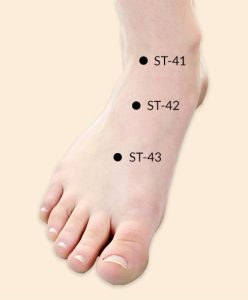 Stomach 41, 42 and 43 – Used to decrease stomach acidity.
Stomach 41, 42 and 43 – Used to decrease stomach acidity.
- Stomach 41(ST-41) is located in the center of the dorsum (front) of the ankle, roughly at the level of the tip of the malleolus, between the tendons of the extensor digitorum and extensor hallucis longus.
- Stomach 42 (ST-42) is located at the highest point of the dorsum of the foot, between extensor hallucis longus and digitorum longus, where the dorsal pedis artery pulsates.
- Stomach 43 (ST-43) is located on the dorsum of the foot, in the depression distal to the junctions of the second and third metatarsal bones.
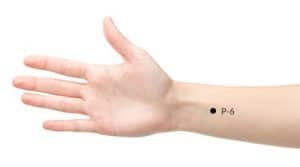 Pericardium 6 (PC-6) – Relaxes the chest, helps digestion flow downward and reduces nausea.
Pericardium 6 (PC-6) – Relaxes the chest, helps digestion flow downward and reduces nausea.
- Located on the inside of the wrist, roughly two finger widths up from the wrist crease, between the palmaris longus and flexor carpi radialis tendons.
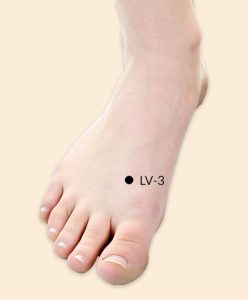 Liver 3 (LV-3) – Reduces anxiety, decreases stomach acidity and minimizes pressure on the stomach from constricted abdominal muscles due to stress.
Liver 3 (LV-3) – Reduces anxiety, decreases stomach acidity and minimizes pressure on the stomach from constricted abdominal muscles due to stress.
- Located on the dorsum of the foot proximal to the first metatarsal space, the junction of the first and second metatarsal bones.
 Conception Vessel 17 – Promotes the downward flow of energy in the chest.
Conception Vessel 17 – Promotes the downward flow of energy in the chest.
- Located level within the forth intercostals space, midway between the nipples.
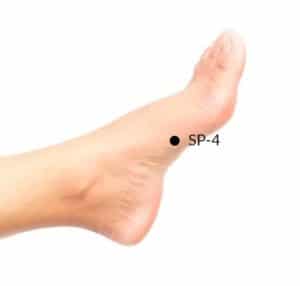 Spleen 4 (SP-4) – Used for calming a rebellious stomach.
Spleen 4 (SP-4) – Used for calming a rebellious stomach.
- Located on the medial aspect of the foot, in the depression distal and inferior to the base of the first metatarsal bone.
Odds are that many clients in any massage practice struggle with occasional or frequent heartburn. While diagnosing and treating this condition is beyond the scope of practice for massage therapists, being familiar with its symptoms, physiology, tips to improve symptoms, warnings and beneficial massage locations will ensure your client receives the best care possible.
Earn continuing education credit for this article contained in our Digestive Ailments series. Click here to enroll.












